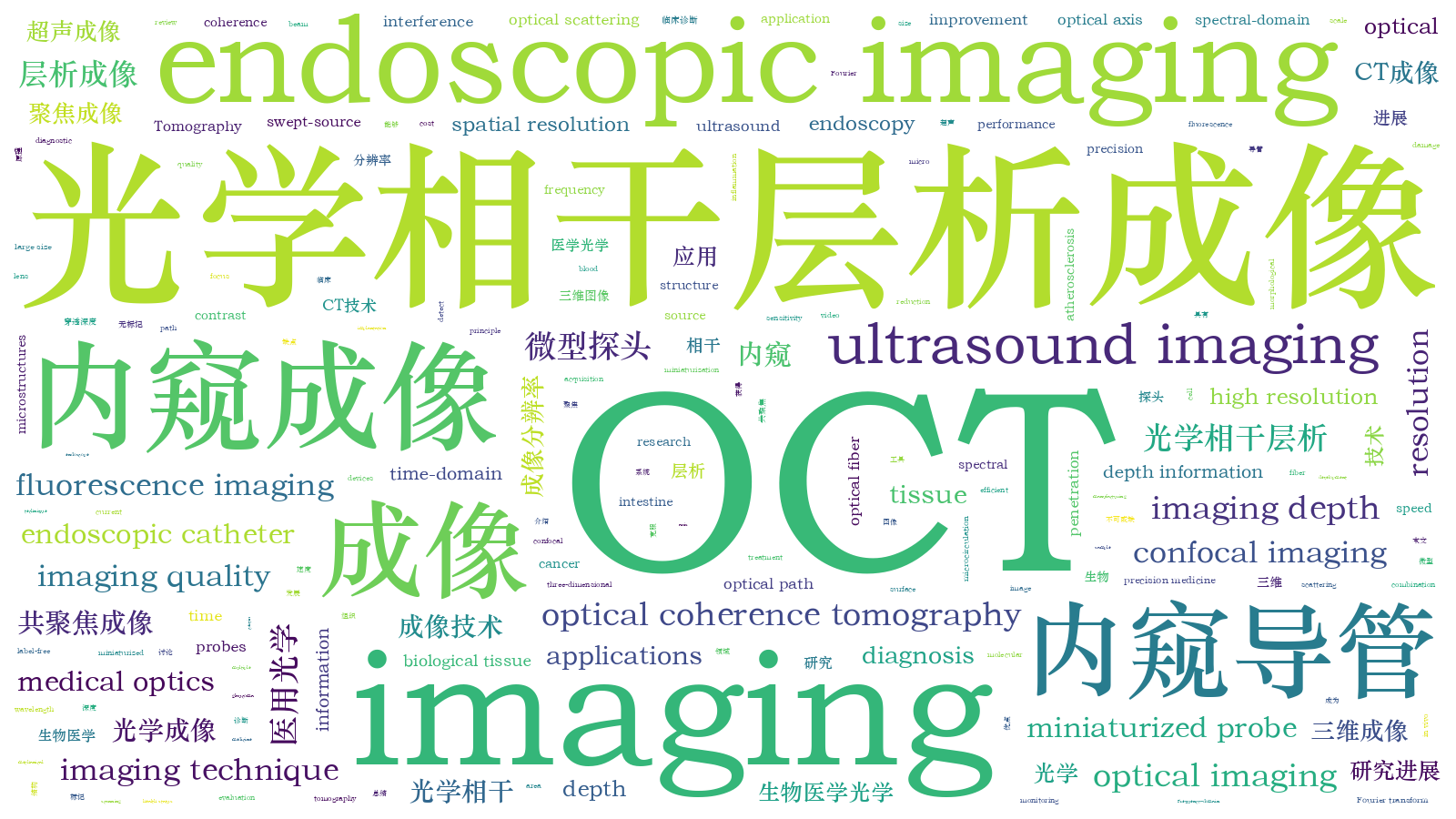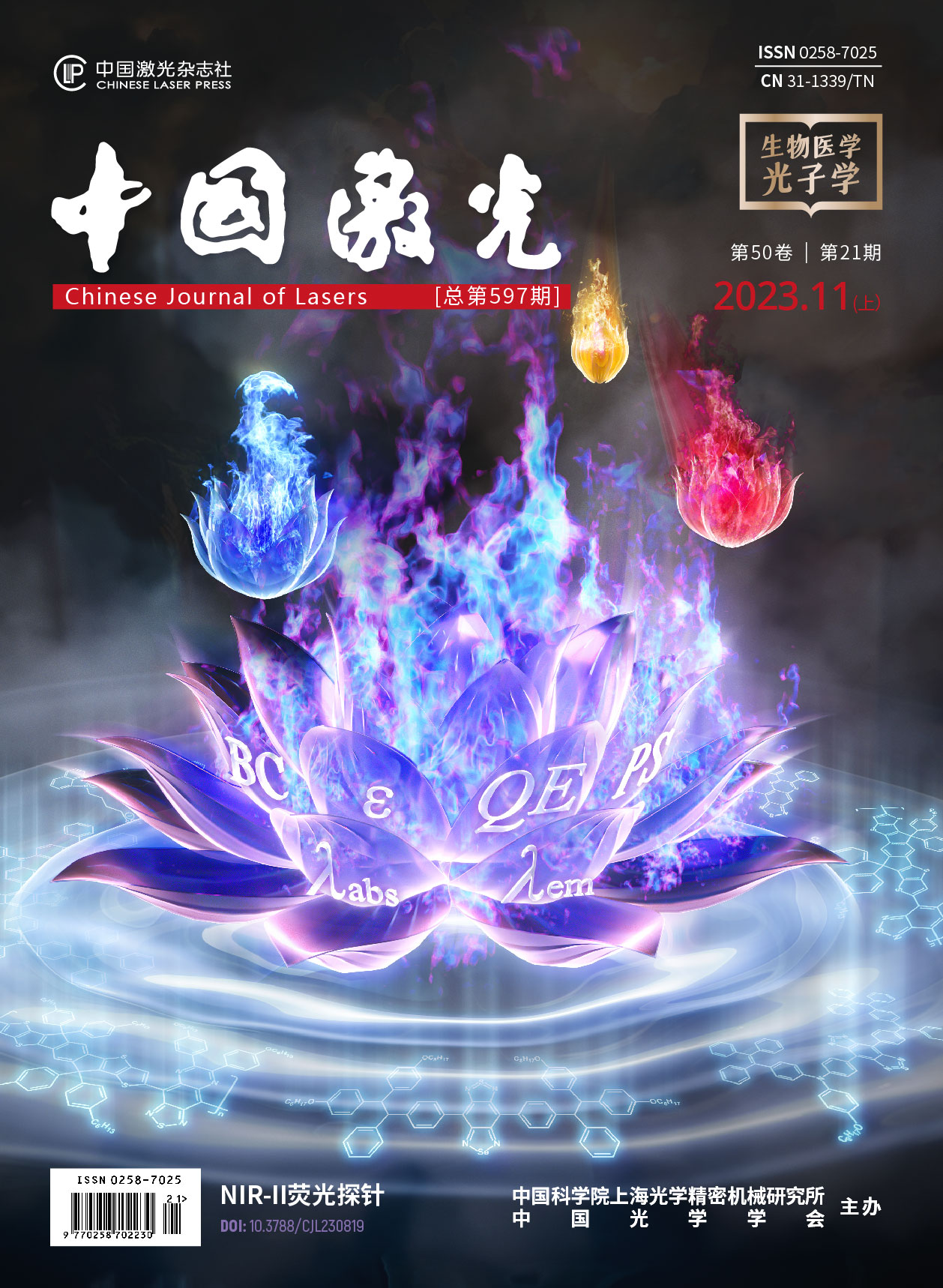内窥光学相干层析成像的研究进展与应用
Optical coherence tomography (OCT) is a label-free optical imaging technique based on the principle of low-coherence interference, which has the advantages of high resolution and fast imaging speed. OCT can image tissue anatomy and microcirculation without physiological sections and exogenous contrast agents. However, the OCT penetration depth is limited to 2?3 mm owing to the optical scattering of biological tissue. Therefore, most OCT applications focus on ocular imaging and endoscopy. OCT has led to a better understanding of ocular structures and has provided efficient treatment of glaucoma, maculopathy, and other ocular diseases. Endoscopy is another important field of OCT application. Combining OCT imaging with an endoscopic micro-probe, endoscopic OCT can obtain three-dimensional morphological microstructures of in vivo internal organs with depth-resolved information and micron-scale resolution, which is advantageous in detecting small lesions under the surface of tissue. With an optical fiber and a miniaturized lens, an endoscopic OCT probe can be inserted into the body through the working channel of a conventional video endoscope. By overcoming the low resolution of ultrasound imaging and the shallow penetration depth of confocal imaging, endoscopic OCT has become an indispensable imaging tool in clinical diagnosis.
First, we summarize the development of endoscopic OCT over recent years. Although ophthalmic OCT still predominates, the research and application of endoscopic OCT techniques are increasing (Fig.1). Three types of OCT systems are described: time-domain OCT, spectral-domain OCT, and swept-source OCT (Fig.2). In contrast to time-domain OCT systems with the mechanical scanning structure in the reference optical path, frequency-domain OCT systems, including spectral-domain OCT and swept-source OCT, record the interference signals as functions of wavelength. The depth information of the sample can be obtained by the Fourier transform of the interference signals at different wavelengths. Frequency-domain OCT improves imaging acquisition speed. Then, various probes are presented, such as the anterior and side-view imaging probes (Figs.2 and 3). An anterior imaging probe with the beam along the optical axis is suitable for guiding surgical procedures. A side-view imaging probe is easily minimalized and is capable of imaging tissue with small inner diameters, such as blood vessels.
Second, the various techniques of endoscopic OCT are summarized, including ultrahigh-resolution OCT and dual-modality imaging. Imaging of porcine coronary arteries with ultrahigh-resolution OCT can detect lesions in the endothelial cell layer, providing a new option for the early diagnosis of coronary atherosclerosis (Fig.5). The alveolar structure in human lung tissue can be observed clearly using ultrahigh-resolution OCT imaging (Fig.6). Ultrahigh-resolution OCT may have more applications in clinical practices if the cost can be deduced. Multimodality imaging has become a popular research area in recent years, which can acquire multiple images simultaneously and overcome the limitations of OCT, providing precision clinical diagnosis. Dual-modality imaging combining OCT with fluorescence imaging compensates for the lack of molecular sensitivity in OCT and provides more detailed information about the tissue (Fig.7). Dual-modality imaging with OCT and ultrasound combines the advantages of the high resolution of OCT and the deep penetration of ultrasound imaging to acquire two types of structural information simultaneously (Fig.8).
Third, we introduce commercialized endoscopic OCT and compare the performance. Many endoscopic OCT devices have emerged over recent years (Table 2). From the clinical applications of endoscopic OCT technology, we review the current advances in cardiology, respirology, gastroenterology, urology, and gynecology. In cardiology, OCT applications for atherosclerosis assessment (Fig.9) and postoperative evaluation of stent implantation procedures have been introduced (Fig.10). In respirology, OCT endoscopy technology has increasing applications in the early diagnosis of lung cancer, chronic bronchial inflammation, bronchial asthma (Fig.12), etc. In gastroenterology, OCT endoscopy can diagnose Barrett’s esophagus lesions early with the risk of esophageal adenocarcinoma (Fig.13). Although endoscopy imaging is challenging for intestinal tissue owing to the large size of the stomach and the long length of the small intestine, endoscopic OCT has promising applications in areas such as intestinal damage diagnosis (Fig. 14) and small intestine allografts (Fig.15). In addition, endoscopic OCT has been used for cancer screening of various tissues, such as the biliopancreatic duct, cervix, and ureter, providing an accurate diagnosis of neoplastic lesions (Fig.17). In gynecology, endoscopic OCT technology offers new ideas for diagnosing gynecological diseases and monitoring of vaginal health status (Fig. 18).
Endoscopic OCT technology has progressed from time-domain OCT to frequency-domain OCT in the past few decades and has become an essential diagnostic tool in addition to traditional endoscopic imaging methods. However, endoscopic OCT technology still requires continuous improvement, including the enhancement of imaging quality, the miniaturization of probes, the extension of imaging depth, the improvement of spatial resolution, reduction in manufacturing costs, and combination with other imaging modalities. With an improvement in performance, endoscopic OCT technology will provide a more significant imaging basis for precision medicine.
张璇晔, 朱疆. 内窥光学相干层析成像的研究进展与应用[J]. 中国激光, 2023, 50(21): 2107103. Xuanye Zhang, Jiang Zhu. Research Progress and Applications of Endoscopic Optical Coherence Tomography[J]. Chinese Journal of Lasers, 2023, 50(21): 2107103.







